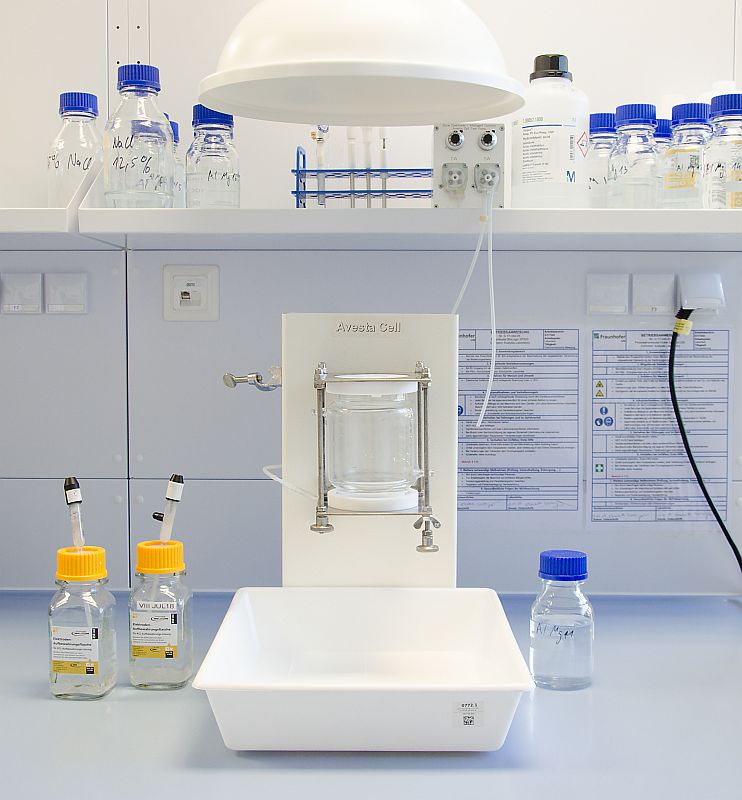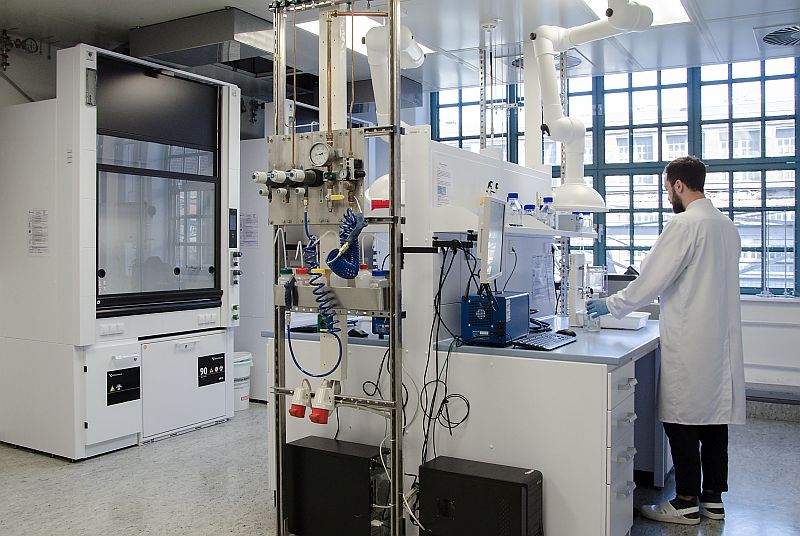Corrosion Analysis Lab
A large number of failures of electronic components are proven to be caused by the influence of moisture. In general, the exposure of electronics to moisture presents a major challenge for any system. In order to qualify and analyze these defects better, the focus in our laboratory is on the electrochemical characterization of materials and their composites with regard to their corrosion behavior depending on the electrolyte exposure occurring in the application.
Various measurement methods are used for characterization and for the individual investigations different measuring stations are available:
Stationary methods
- open circuit potential measurements
- potentiostatic measurements
- galvanostatic measurements
- linear polarization measurements
Potential sweep methods
- Linear-Sweep-Voltammetry (LSV)
- Cyclovoltammetry (CV)
AC methods
- electrochemical impedance spectroscopy (EIS) (EIS)
A temperature-dependent analysis in the range between 20 °C - 80 °C is possible by combining classical corrosion measuring cells with thermostats. In addition to classical surface corrosion investigations, it is also possible, for example, to simulate gaps in order to investigate corrosion in particularly critical areas. The laboratory also contains an atomic emission spectroscopy (AES) to qualify the used electrolytes. The elec-trochemical investigations allow the investigation in different media. Thus, investigations can be carried out in water but also in different salt solutions or in solutions with various pH values. This enables an assess-ment of the corrosion affinity in media of varying aggressiveness, which can be specially adapted to the later application.
In addition to the electrochemical methods, power modules can be investigated using the HV-H3TRB test. The power modules are operated under high voltage (80 % of the nominal voltage) and are traditionally stored at 85° C / 85 % r.H. In addition, studies on electrochemical migration can also be carried out. An SIR test bench is available for this purpose. Furthermore, investigations by Waterdrop tests or THB tests are possible.
 Fraunhofer Institute for Reliability and Microintegration IZM
Fraunhofer Institute for Reliability and Microintegration IZM

